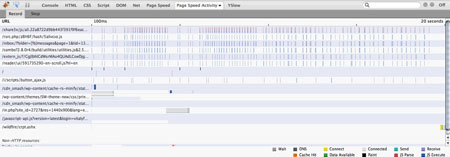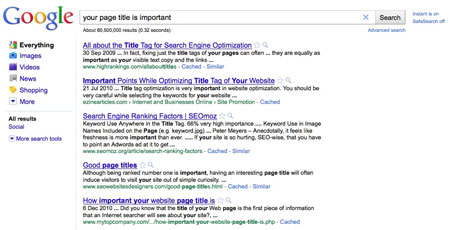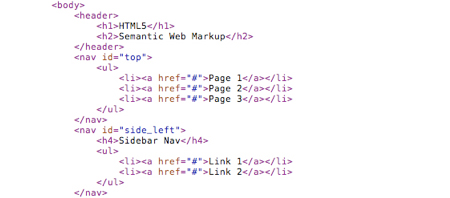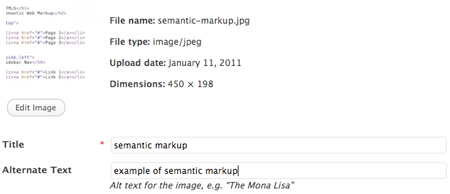
This post is part of a serie on SEO for web designers, make sure you don’t miss any update by subscribing to the RSS feed.
- Part 1: planning your website
- Part 2: website structure
- Part 3: on-page optimization
- Part 4: link building
- Part 5: keeping it up
Now that your website is planned, you have your URL, keywords and a good website structure. It is time to optimize your pages to be more crawlable and optimized for both search engines and readers.
Optimize pages titles

One of the most important parts of your on-page SEO. It is used by search engines as headlines for search results, so your page’s title will have an impact on both the search engines and people searching.
In your page’s title, try to include your keywords, but keep the title coherent and attractive to your potential readers, don’t forget that you are writing for them. Keep the title under 65 characters or Google may cut of your page’s title with an ellipsis. This would not look good in the search results page and people will not be able to read the full title.
Optimize the page Description

The description is not decisive in Google’s rankings, but it will appear in the search results and influence whether the people will click through or not.
Try to keep it under 200 characters and make it as descriptive as possible.
SEO Friendly Design Structure

Your site structure counts in SEO in multiple ways, if you avoid using tables for site structure and stick to HTML-CSS, chances are that you’ll get a lighter and more crawlable page. Needless to say that this will also make your life easier by having a site that is easier to update in the future.
Semantic Web Markups

Use appropriate tags in your content. <h1> will definitly work much better than <div =”maintitle”> to let search engines know the hierarchy of your content. Good titles and sub-title are a very important element of your on-page SEO optimization. <strong> and <em> tags should be considered to emphasize important keywords into core text.
Optimize your site Load Time

Google is quite obsessed with its own speed, but not only. The search engine also gives a lot of importance to the speed of websites it crawls and use the page speed of pages to rank it.
There are a lot of steps to take to get a fast-loading page: minimize HTTP requests, add an expires header, GZIP components,… It would be too long to list here, so I suggest that you take a look at Yahoo’s best practices for speeding up your website.
Optimize your images

Don’t underestimate the power of image search. Pay attention to the way you name your image files, avoid titles like CDN000004.jpg, they are just useless, instead try something like cute-dog.jpg. Also fill in the alternate text and title for the image.
Avoid using these CSS techniques

When working on your website, avoid using these CSS techniques that would ruin all your efforts. Be careful not using CSS to hide text, Google sees it and doesn’t like it. Don’t hide text either by setting the same color for the text as for the background, that’s just dumb.
Not as bad, but you should also try to avoid using CSS to replace images.

